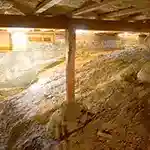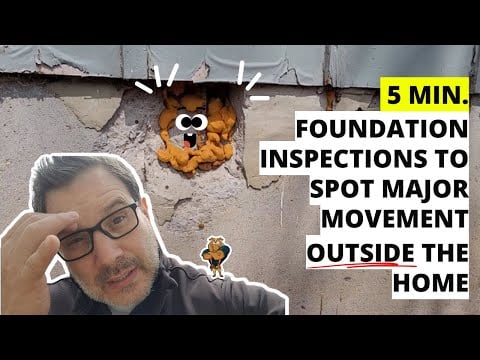Check out this quick video from a recent Grandview, MO. home inspection I was doing for a California real estate investor.
In the video, you’ll see me perform the first of three foundation inspections on conduct on every home I inspect.
The first is always outside, the second takes place inside as I look at the ceilings, walls, doors, windows, and floors; and the third – and final – part of these foundation inspections happens in the basement or crawlspace.
I call this my Gravity Flow process because it starts outside then moves along from top-to-bottom.
In this case, the foundation moved inward and forced the home’s main beam through the wall until it popped through the concrete and could be seen outside the home.
You’ll see that it had either been badly patched or the foundation continued to move, but these are the types of red flags you should know BEFORE you get too emotionally vested in the home; especially if there’s no public history or you’re buying it as-is.
This damage is also a clear sign that the foundation is NOT JUST moving but also being pushed in BEFORE you even got inside the home – and this is the type of foundation movement that creates horizontal cracks and expensive foundation repairs.
So, if you’re touring homes and see this on your walk around the outside, you can be sure the foundation is shifting.
Then use this bit of knowledge to dig a little deeper and ask some questions or remind you of any work that has already been done.
Either way, doing quick 5 min. foundation inspections on the homes you visit can protect you from expensive foundation repairs and avoid wasted home inspection fees as you search for your next Kansas City home.













